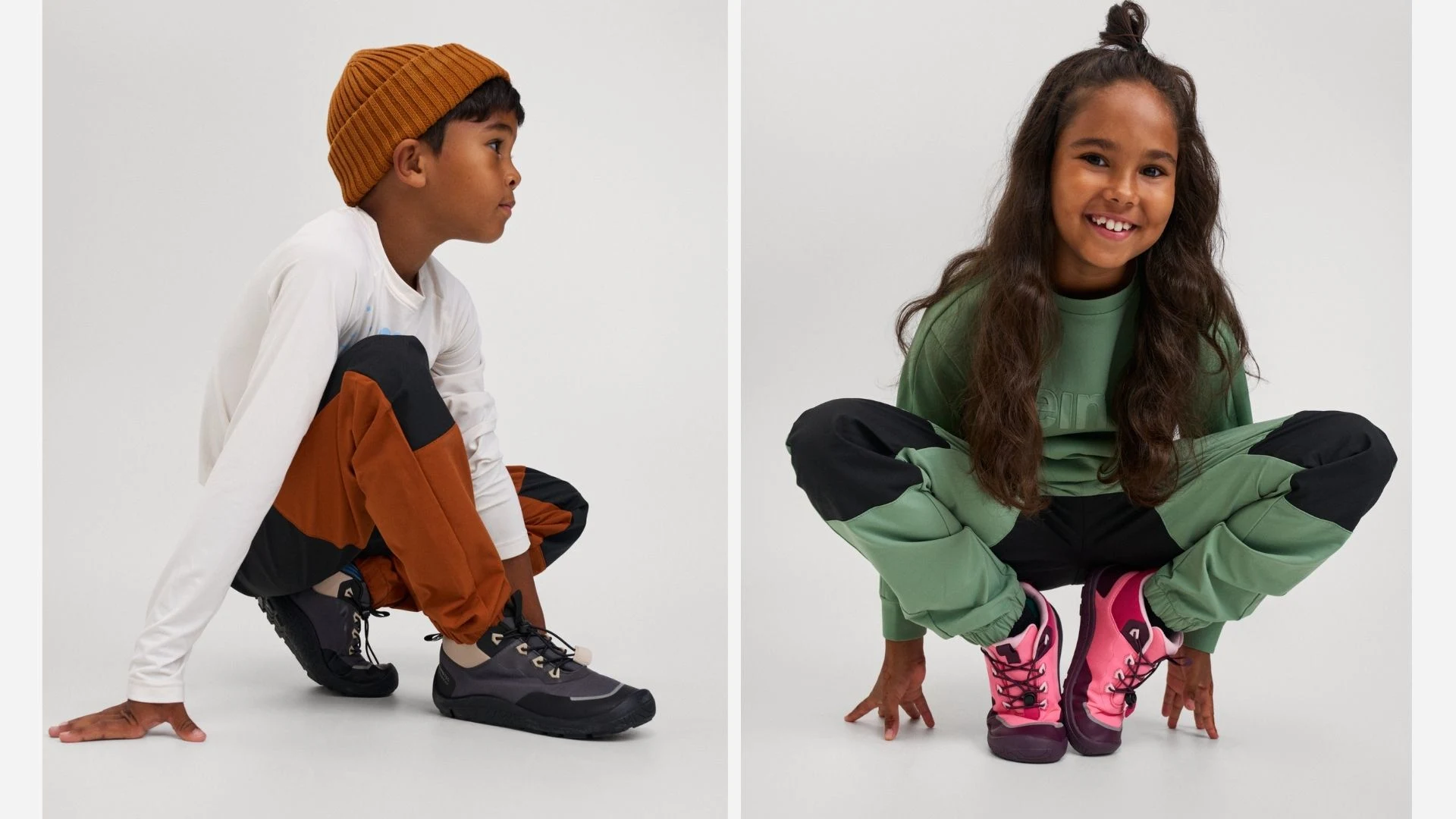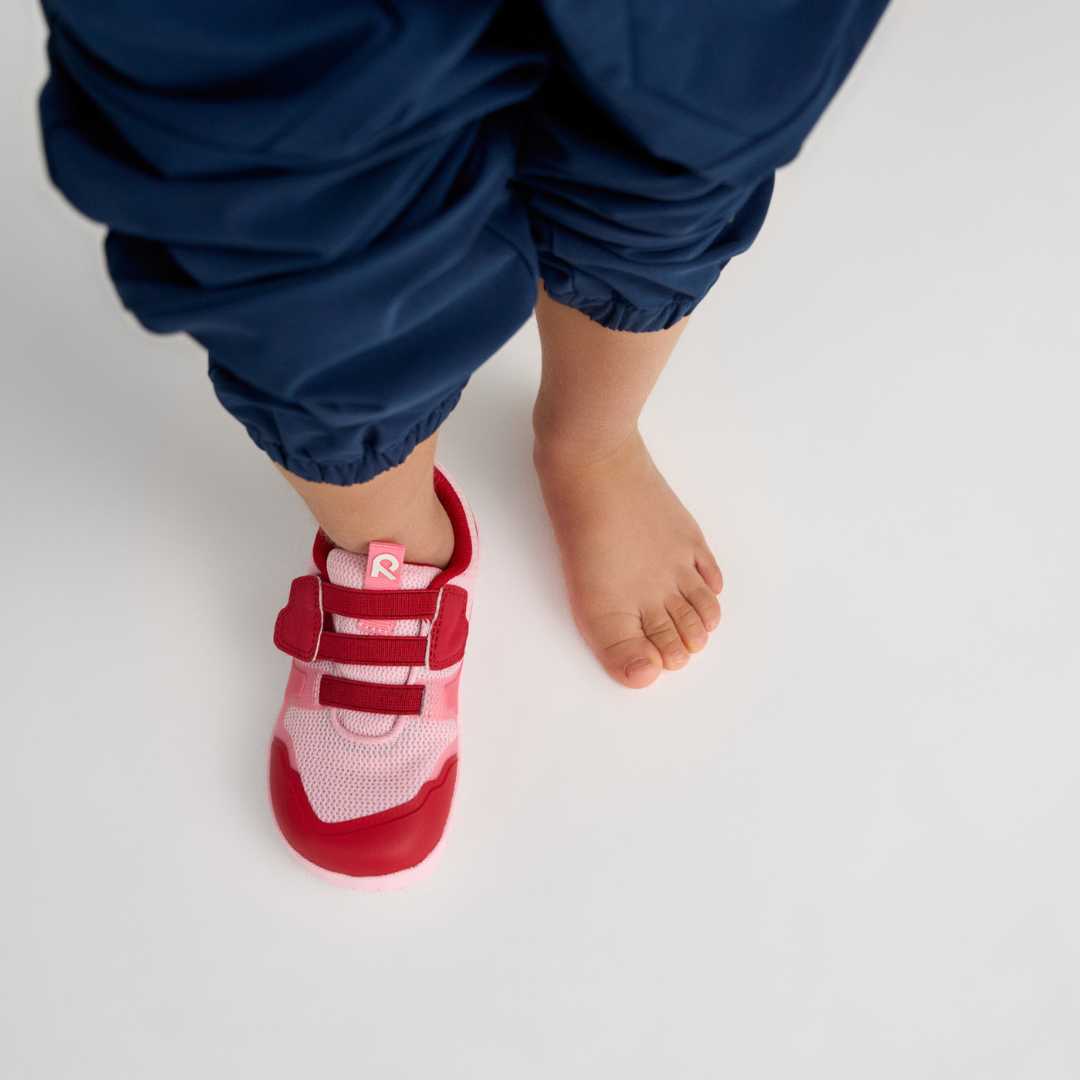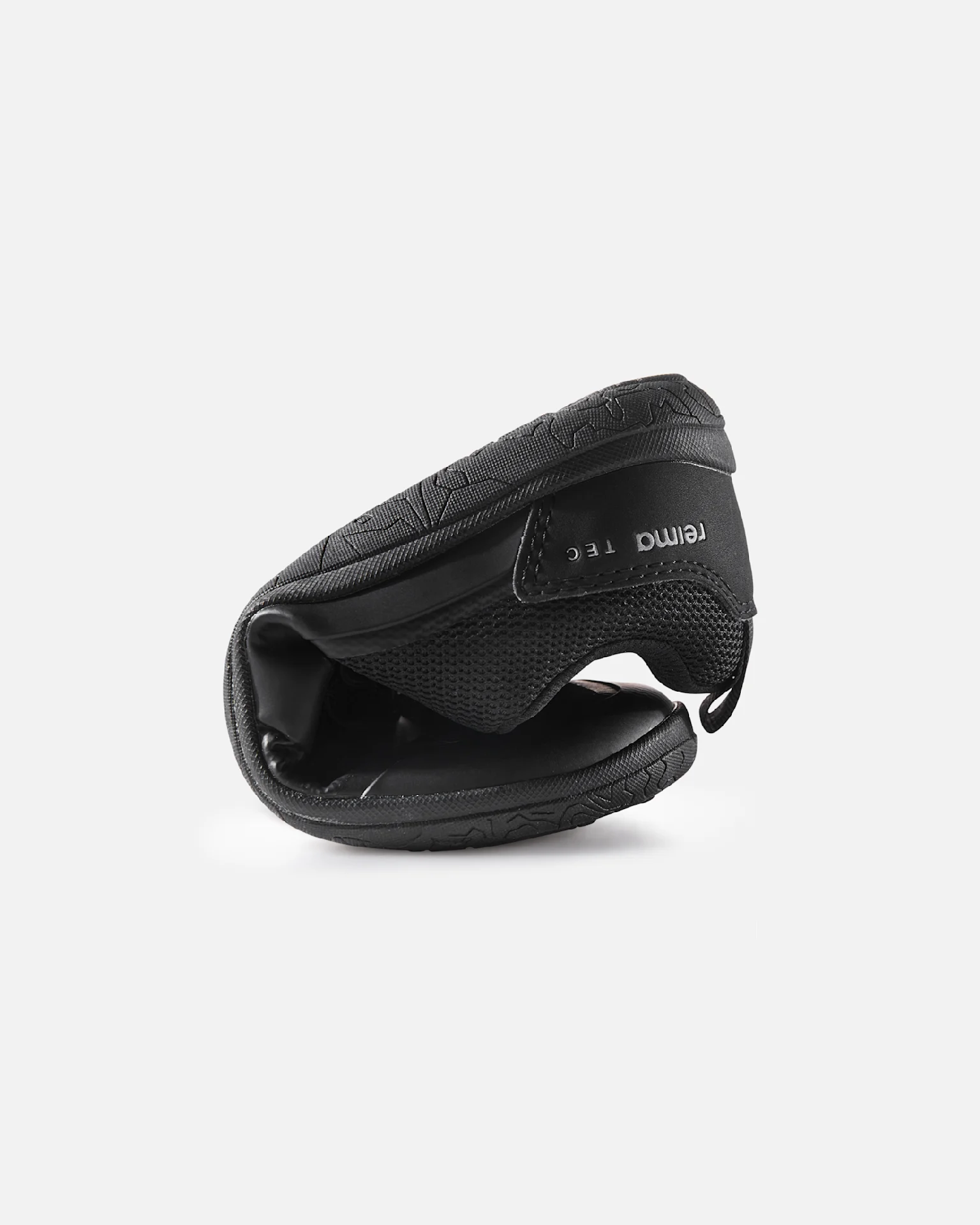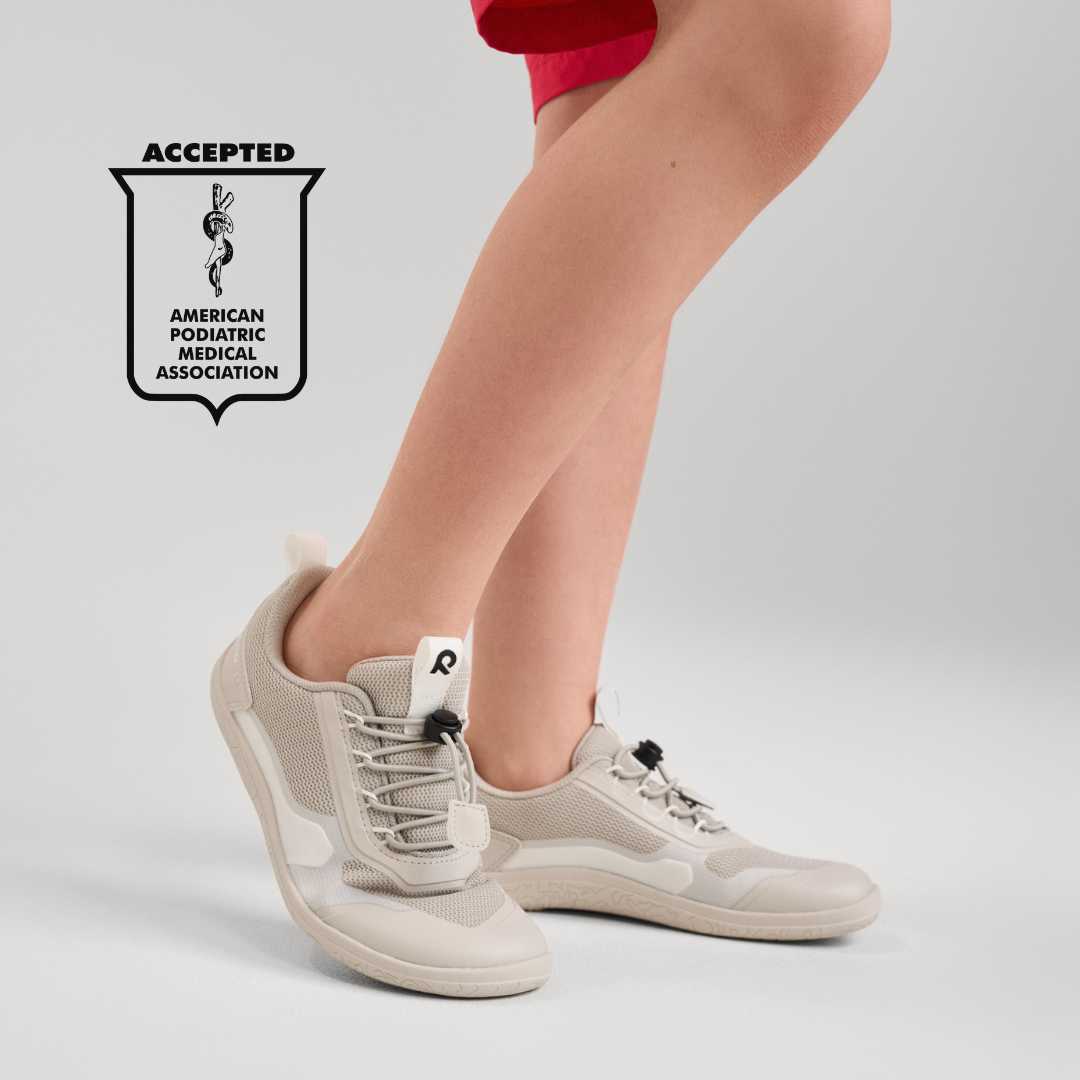
Barefoot Shoes vs Traditional Shoes: What’s the Difference?
Traditional shoes may vary in style, but most share core features: a tapered toe box that narrows as it approaches the toe, a cushioned midsole (particularly in running shoes), a thick outsole engineered for durability, and a raised heel that cushions impact for heel strikers. These design choices shape how we walk, stand, and move—often in ways we hardly notice.
In recent decades, a growing movement has challenged these norms. Barefoot shoes reimagine how footwear interacts with the body, favoring a natural posture, full-foot engagement, and heightened sensory feedback.
What Makes Barefoot Shoes Different?
The three key features of barefoot shoes are a zero-drop heel, a wide toe box, and a lightweight, flexible sole.
While there is a time and a place for shoes with the traditional features mentioned above, at Reima, we believe children in particular benefit from feet allowed to move, grow, and develop naturally, as humans evolved to move. Barefoot. So we designed a barefoot last (the foundation that determines the shape and volume of a shoe) from scratch, specifically for kids and unique to Reima.
Let’s dig a little deeper into the three features that make barefoot shoes for kids so special.
Why Zero-Drop Heels Are Better for Kids
Even a slight heel, like the lift found in many running shoes, can alter a child’s natural alignment, affecting the legs, spine, and neck over time. Our kids’ barefoot sneakers feature a zero-drop sole to support proper posture development in growing bodies.
Benefits of Wide Toe Boxes for Growing Feet
A wide toe box gives growing feet room to breathe, allowing toes to splay naturally and supporting a fuller range of motion. This open design promotes foot strength and encourages proper muscle development in the feet, which can lead to fewer injuries, reduced strain on the back and joints, and better mobility as children grow.
A narrow toe box can produce common foot issues, like bunions, hammer toes, or ingrown nails. They can restrict blood flow or even pinch nerves in the feet. An adult might want a narrow toe box for smaller feet or in responsive ski boots, but children deserve room to move naturally.

How Lightweight, Flexible Soles Improve Ground Feel
Our thin-yet-durable soles strike a balance—essential protection from the elements (plus rocks and other pokey things) without sacrificing flexibility and ground feel. Retaining this connection allows your child to remain in touch with the textures and rhythms of the Earth beneath them.
There can be benefits to thicker soles, like the cushioning or rebound offered in performance running shoes, or extra rock protection in hiking boots, but we believe that growing children benefit far more from spending most of their time building a connection with their world.
It’s even backed by science.

Why Podiatrists Recommend Barefoot Shoes vs Regular Shoes
Did you know that feet have 26 bones, 33 joints, and over 200,000 nerve endings? There’s more information than you think being transferred between feet and the ground.
If you dig into the science behind barefoot shoes, it’s not hard to understand why they’re podiatrist-recommended.
When kids are allowed to run around barefoot—and wear barefoot shoes—their feet are transferring all types of environmental information to their bodies and brains. This is referred to as proprioception, or the body’s ability to sense its place in the world, in relation to objects and the environment in which it interacts.
Proper ground feel, combined with no-rise heels and a wide toe box, promotes healthy posture and development, strengthening feet and building a solid foundation for all body movement as kids run, jump, learn, and grow.
Need further proof? Reima barefoot shoes like the Astelu and the Tallustelu have been honored with the prestigious APMA (American Podiatric Medical Association) Seal of Acceptance, which is a mark of excellence, recognizing products that promote good foot health. The APMA Seal is granted to products that have been rigorously reviewed and shown to provide exceptional support, comfort, and overall foot health benefits.
When choosing barefoot shoes vs normal shoes, there are some cases in which barefoot shoes may not be for every kid—children with foot pain, structural issues, or certain gait patterns may need different types of support than a barefoot shoe can offer. In this case, we recommend speaking directly with your child’s doctor for advice.

Find Barefoot Sneakers Kids Will Love at Reima
Need help picking out a pair of kids’ barefoot running shoes, boots, or sandals?
The Tepastelu is a barefoot sneaker designed for adventurous toddlers and changing weather. They’re water-resistant, feature small-hand-friendly hook-and-loop closures, and—of course—come with Reima’s signature wide toe box, zero-drop heels, and thin, flexible soles.
Two similar options, designed for more burly weather with reflective details and a grippier sole, are the Viikari and Hyppii. A good choice for tackling trails with the family after school.
For older kids, the Astelu and the Tallustelu are trusted lightweight options for everyday comfort and development, with breathable uppers and elastic lacing for a fast and easy pull-on. If they’re looking for a more adventurous option, the Sankari features a grippy outsole and more ankle support.
And there’s no need to compromise ground feel and happy toes for dry feet. If stormy skies are in the forecast, grab the Ankka rain boots or Loikkii shoes, which feature ReimaTec Waterproof technology.
Looking for more resources before you buy? Find the perfect fit for your kid’s barefoot shoes here, dive deeper into the benefits with our care guide and a Q&A here, or discover the 5 Reasons Why Your Child Needs Barefoot Shoes.








